Tips to help reduce perioperative pressure injuries
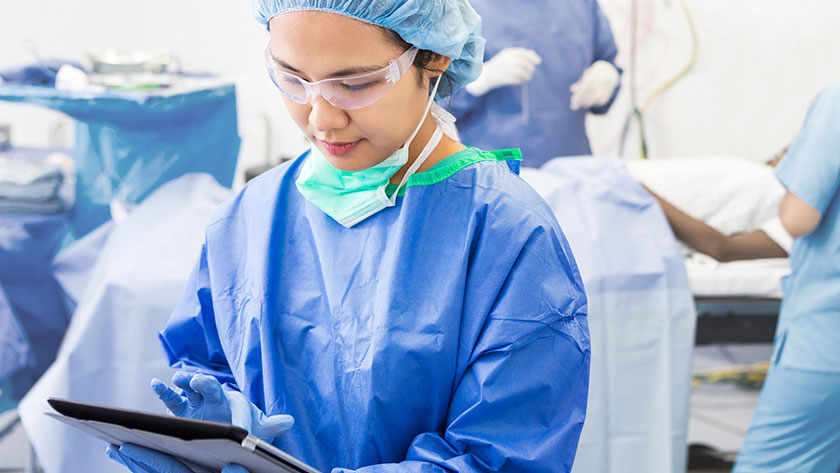

Kim Kehoe BSN, RN, CWOCN, DAPWCA, Clinical Education Specialist, Skin Health Division, Medline Industries, LP
The world watched as cases of COVID-19 rapidly rose, catching communities and healthcare systems offguard. By late March, the American College of Surgeons and the U.S. Centers for Disease Control and Prevention had recommended that medical facilities delay non-emergency surgeries, such as hernia repair and hip replacements.1
Postponing such surgeries helped better allocate healthcare staff, personal protective equipment and ventilators to support COVID-19 patients, and it kept infected patients and loved ones from risk of potentially transmitting the disease.
Now, hospitals and surgery centers have begun reopening their doors to elective surgeries. For wound care, this means the risk of perioperative pressure injuries increases as well. Pressure injuries that form in the operating room can lead to more days in the hospital and more cost to the patient.2
This article explores the many ways you can help reduce the risk factors and conditions that are conducive to the development of PIs before, during and after surgery. As always, the goal is to make skin health a priority for your staff—and your patients.
Is your facility prepared for restarting elective surgeries? The American College of Surgeons offers some guidance here.
Perioperative PIs by the numbers:3
4 Steps to PI prevention
In order to help reduce patient risk for perioperative pressure injuries, it’s important to do 4 things:
- Understand risk factors unique to each stage of surgery
- Assess individual patient risk for developing pressure injuries
- Initiate early prevention strategies
- Continue prevention and treatment protocols post-surgery

Understand risk factors
The very nature of surgery—the immobility of the patient—poses risks to skin integrity. But each patient’s personal health variables also play a role in risk, as well as prevention. That’s why it’s so important to consider a patient’s individual risk factors. Some of those factors may stem from surgery prep protocols, such as the need to abstain from food or drink (NPO status), which can cause dehydration, or anesthesia medications that induce unresponsiveness.4
It’s important to note that, while pressure injuries on patients in wheelchairs or those who are bedridden or immobile typically occur on the sacrum, coccyx or ischial tuberosities, PIs during surgery may appear on any number of areas of the body. It can depend on the patient’s position during surgery and if any restraints or medical devices were used.5
Keep these high-risk categories in mind:2
- Critically ill
- History of previous PI
- Those receiving hospice or palliative care
- Neuromuscular disorders
- Age—either very young or over age 65
- Underweight or overweight
- Exposure to moisture, due to excess sweating or incontinence
Pre-surgery patient risk factors at a glance: 2
- Decreased mobility
- Dehydration from NPO status
- Medications that may induce unresponsiveness
- Type of injury and surgery
Assessing risk
A comprehensive skin assessment and pressure injury risk assessment should be performed when a patient enters any healthcare setting and then repeated on a regularly scheduled basis or when there’s a significant change in the individual’s condition, including surgery. An initial skin assessment entails a close observation and inspection of a patient’s entire body, providing baseline information on skin health and risk factors that can inform prevention and treatment plans.
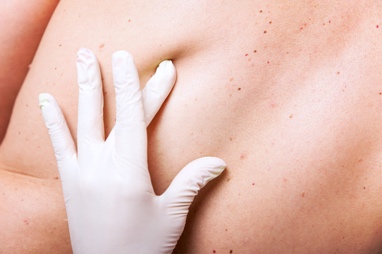
It will also make it clear if there are any significant changes as subsequent assessments are conducted.6
There are a variety of assessment tools available, and you may want to use more than one. Whichever you choose, the goal is to determine the patient’s risk of developing a pressure injury and recommendations to prevent and treat the injury. Two commonly used scales are the Braden Scale and the Scott Triggers assessment.
Use a validated assessment scale — Braden Scale7
One of the most widely used and researched pressure injury tools is the Braden Scale for the prediction of pressure injury risk. While not validated for perioperative use, the Braden Scale helps you better understand the conditions that can increase the risk for pressure injury development. The scoring system includes six risk factor subscales that help target intervention strategies.
Read more about the Braden Scale.
After you calculate the total Braden score, consider other major risk factors such as advanced age, fever, poor dietary intake of protein, low or unstable blood pressure, all of which could increase risk levels. Remember that patients assessed as low risk outside of the operating room can still develop pressure injuries in the OR due to some of these other factors.
Designed by Susan Scott, MSN, RN, WOC, Scott Triggers is a set of evidence-based risk factors specifically meant for the perioperative setting. It takes into account the following 4 factors significant to the development of pressure injuries:
- Age over 62
- Albumin level less than 3.5
- American Society of Anesthesiologists’ (ASA) score 3 or greater
- Surgery expected to last more than 160 minutes
If two or more Scott Triggers are present, that may indicate an increased risk of perioperative pressure injuries.
Create a skin bundle
After the patient’s risk factors are determined, it’s time to implement an OR skin bundle, otherwise known as the perioperative pressure injury prevention plan (PPIPP).9 This plan is a set of evidence-based interventions.
The OR skin bundle may include:
- Assess skin before and immediately after surgery
- Use safe patient handling
- Specify the right OR table pad
- Redistribute pressure
- Pad bony prominences
- Offload pressure on heels
- Use only approved positioning devices
- Maintain body temperature
- Maintain microclimate
- Communicate patient condition during hand-over to post-surgery unit
- Get patient mobile as soon as possible
- Conduct daily skin assessment
- Report pressure injuries that develop within 72 hours after surgery
More on safe patient handling
A surgery patient might be transferred from one surface to another six or more times. This increases their risk for skin shearing and friction. By using safe patient handling strategies, the risk may be reduced. For instance, the Association of Perioperative Registered Nurses (AORN) recommends that patients weighing more than 157 pounds be moved with assistive devices and four caregivers.
Studies show that air-assisted lateral transfer devices are more effective than traditional devices, such as a draw sheet, and may help reduce the risk of strain and injury to caregivers, as well. In fact, studies show it helps reduce caregiver effort by 75 percent.10
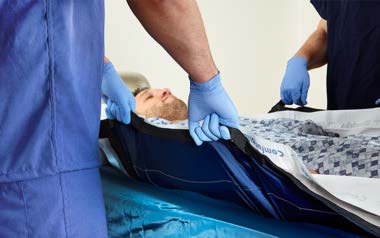
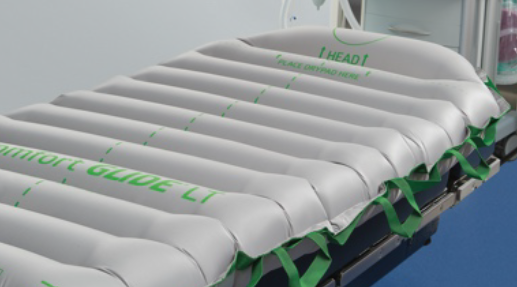
Standardize OR table pads
The NPIAP support surfaces initiative defines a support surface as “a specialized device for management of tissue loads, microclimate, and/or other therapeutic functions (i.e., any mattress, integrated bed system, mattress replacement, overlay or seat cushion, or seat overlay).”
Most operating room or procedure bed mattresses are foam overlays or replacement pads, but studies show that these are not effective for pressure redistribution. On the other hand, support surfaces specially manufactured for the perioperative setting use therapeutic foam, or visco elastic memory foam with or without gel inserts, and they may offer protective covers. Standardizing to the appropriate foam surface can help reduce pressure injury incidence.11
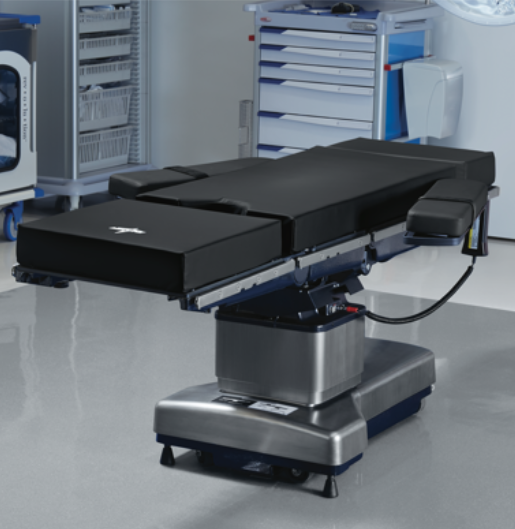
Redistribute pressure and pad bony prominences
In addition to the right support surface, there are other strategies to help reduce the extremes of pressure, shear and friction. Gel and foam positioners can help stabilize patients and provide gentle support during surgery, but items such as IV bags, towels, rolled sheets or blankets should not be used, as they can cause harm during long procedures.12
Offloading heels
At a minimum, staff should elevate the patient’s heels off the underlying surface. One common way is by placing pillows under their calves, but be sure you know the recommended way. Place the pillow longitudinally underneath the calf with the heel suspended in the air, while avoiding hyper-extending the knee.
However, pillows can be challenging because they can slip, so maintaining alignment and preventing leg and foot rotation may be difficult. Instead, heel offloading devices are designed to offload the heel while stabilizing the lower leg; some of these devices include inner materials that also help cut down on friction and shear.13
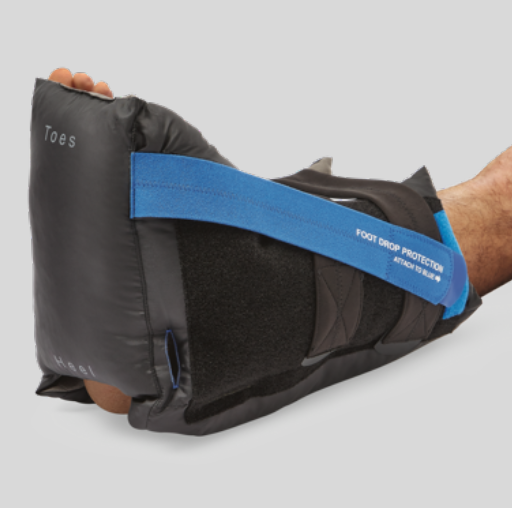
Prophylactic dressings
Prophylactic dressings such as silicone foam dressings can be used in combination with the OR skin bundle interventions.14
Follow these suggested areas of the body to place foam dressings related to positioning:3
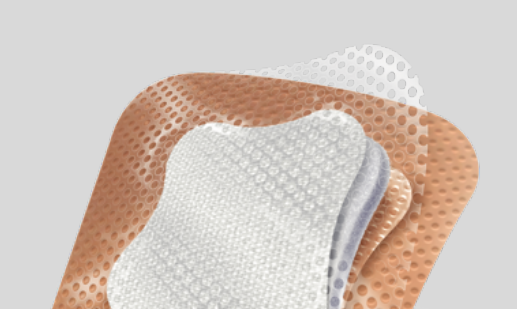
Supine and Trendelenburg
- Back of head
- Shoulder blades
- Arms and elbows
- Thoracic vertebrae
- Sacrum
- Coccyx
- Heels
Lateral (on the side against the surface)
- Face and ear
- Shoulder
- Armpit
- Hip
- Knee
- Ankles and feet
Lithotomy position
- Face and ear
- Shoulders
- Armpit
- Hip
- Knee
- Ankles and feet
Prone and jackknife positions
- Forehead
- Eyes
- Ears
- Chin
- Breasts
- Pelvic bones
- Genitalia
- Anterior shoulders
- Knees
- Shins
- Upper side of feet and toes
Reducing pressure using pillows
The proper use of pillows or wedges to separate bony prominences can also be effective in reducing pressure for individuals in a lateral position or for those contracted individuals to help maintain a semi-lateral position. The medial side of the knees are a common place for pressure injuries in a patient in the lateral position. Placing a pillow length wise can help reduce prolonged pressure.15
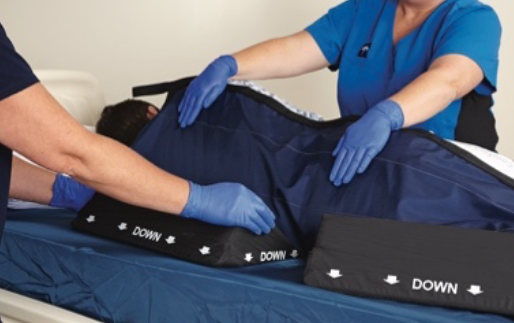
Maintaining normothermia-managing microclimate
It’s important to maintain normal body temperature and manage the microclimate because excessive perspiration, moisture or heat at the skin level can lead to moisture associated skin damage that may lead to skin breakdown and increase the risk of PIs.
Consider the following for normothermia and microclimate:16
- Assess appropriate use of warming blankets on top of or beneath the patient
- Keep skin dry
- Monitor for pooling of fluids
- Use dry sheets or drapes to help wick moisture away from skin
Continuing care
Perioperative pressure injury prevention does not end when surgery does. Skin changes can appear up to 72 hours after surgery, and cell death in the skin tissue could still happen up to a week later. An injury may start as a burnlike lesion, bruise or blister. If a patient has poor blood circulation, the skin may have a mottled, irregular pattern that could lead to a more serious skin injury.5
Immediately following surgery, the patient’s skin should be cleaned and dried, then assessed for any changes in skin temperature, skin integrity, skin color, skin texture and turgor, and moisture status. When the patient is transferred to the post anesthesia care unit, it’s important to report the patient’s PI risk factors to the team there—including pre-surgery risk factors and any new risk factors that developed during surgery.
Key takeaway
Pressure injury prevention protocols for before, during and after surgeries requires understanding common and individual risk factors. To promote skin health, there are many important steps to take based on evidence-based best practices, including skin assessments and communication between patient care units. You can help by working with the care team to choose the right products and make skin health a priority.
Learn more pressure injury prevention protocol tips:
- Are you doing comprehensive skin assessments correctly? Get the whole picture
- Raising the Braden Scale to lower pressure injuries
Innovative products that can help lower the risk of pressure injuries:
- Pressure redistribution pads for OR tables and stretchers
- Heelmedix heel protectors, designed to completely offload the heel and help prevent foot drop
- A foam dressing with silicone border that can help reduce hospital-acquired pressure injuries
Additional resources that help make skin health second nature:
References (All accessed May 19, 2020):
- https://www.facs.org/covid-19/clinical-guidance/patient-guide
- https://www.o-wm.com/content/intraoperatively-acquired-pressure-ulcers-are-there-common-risk-factors
- https://es.halyardhealth.com/media/1513/h0277-0701_ci_pressure_ulcer.pdf
- https://www.aorn.org/-/media/aorn/guidelines/tool-kits/pressure-ulcer/update-2017/older%20adult%20resources.pdf?la=en
- https://www.ncbi.nlm.nih.gov/pmc/articles/PMC4467017/
- https://woundcareadvisor.com/comprehensive-skin-assessment-vol4-no4/
- https://journals.lww.com/aswcjournal/fulltext/2012/02000/the_braden_scale_for_predicting_pressure_sore.4.aspx
- http://www.scotttriggers.com/
- https://www.researchgate.net/publication/323946331_Perioperative_Pressure_Injuries_Protocols_and_Evidence-Based_Programs_for_Reducing_Risk_wwwpsqhcom
- https://meddevod.wpdev.medline.com/media/catalog/Docs/MKT/LIT876_BRO_Comfort%20Glide%20LT_19119620.pdf
- https://journals.lww.com/nursing/Fulltext/2020/02000/Choosing_a_support_surface_for_pressure_injury.12.aspx
- https://www.mnhospitals.org/Portals/0/Documents/patientsafety/Pressure%20Ulcers/MHA_perioperative_recommendations.pdf
- https://journals.lww.com/nursing/Fulltext/2004/11000/Preventing_heel_pressure_ulcers.12.aspx
- https://www.ncbi.nlm.nih.gov/pmc/articles/PMC5592987/
- https://www.aci.health.nsw.gov.au/networks/spinal-cord-injury/pi-toolkit/management/address-causative-andcontributing-factors/bed-positioning
- https://www.wjgnet.com/2218-6182/full/v4/i3/58.htm
